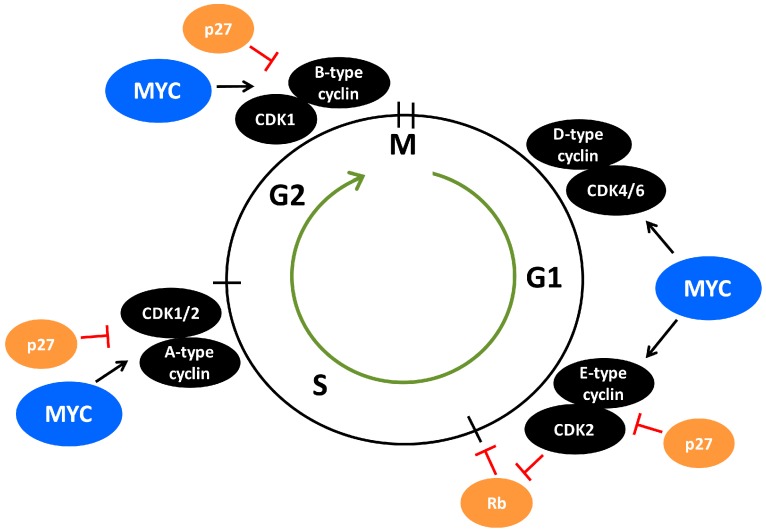Figure 2.
Experiments performed in the early 1990s using the MYC transactivation domain (TAD) fused to the DNA binding domain of GAL4 in promoter/reporter assays suggested that the activity of the MYC TAD was enhanced by serum stimulation or by ERK2, and was regulated during the cell cycle in a Ser-62 dependent manner [54,89]. The mammalian cell cycle. The cell cycle phases, gap 1 (G1), DNA synthesis (S), gap 2 (G2) and mitosis (M) and the different cyclin/cyclin-dependent kinase (CDK) complexes and their periods of activity during the cell are illustrated. The retinoblastoma protein (pRB), which blocks entry into S phase through transcriptional repression of E2F family transcription factors, is inactivated by D-type/E-type-cyclin/CDK2/4/6 phosphorylation thus enabling G1-S phase transition. The activities of the CDK2 and CDK1 complexes are inhibited by the CDK inhibitor p27KIP1 (p27). The points of intervention by MYC in the cell cycle are depicted. Proteins depicted in black represent factors with growth-promoting/oncogenic function (with the exception of MYC, which is colored blue), while those in orange represent growth/tumor-suppressive function in this context.

